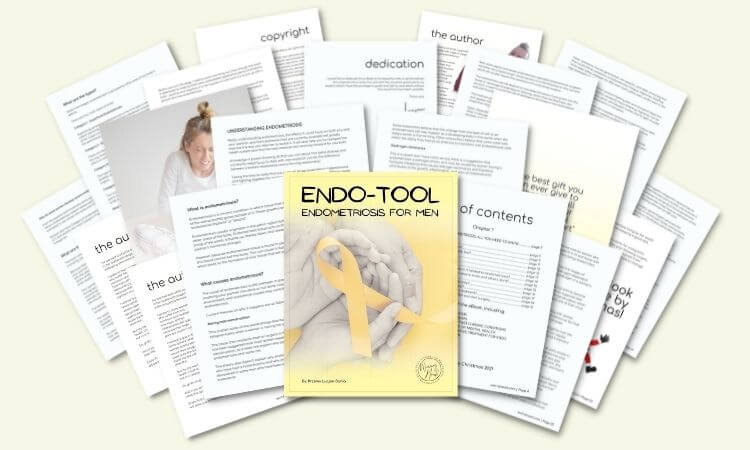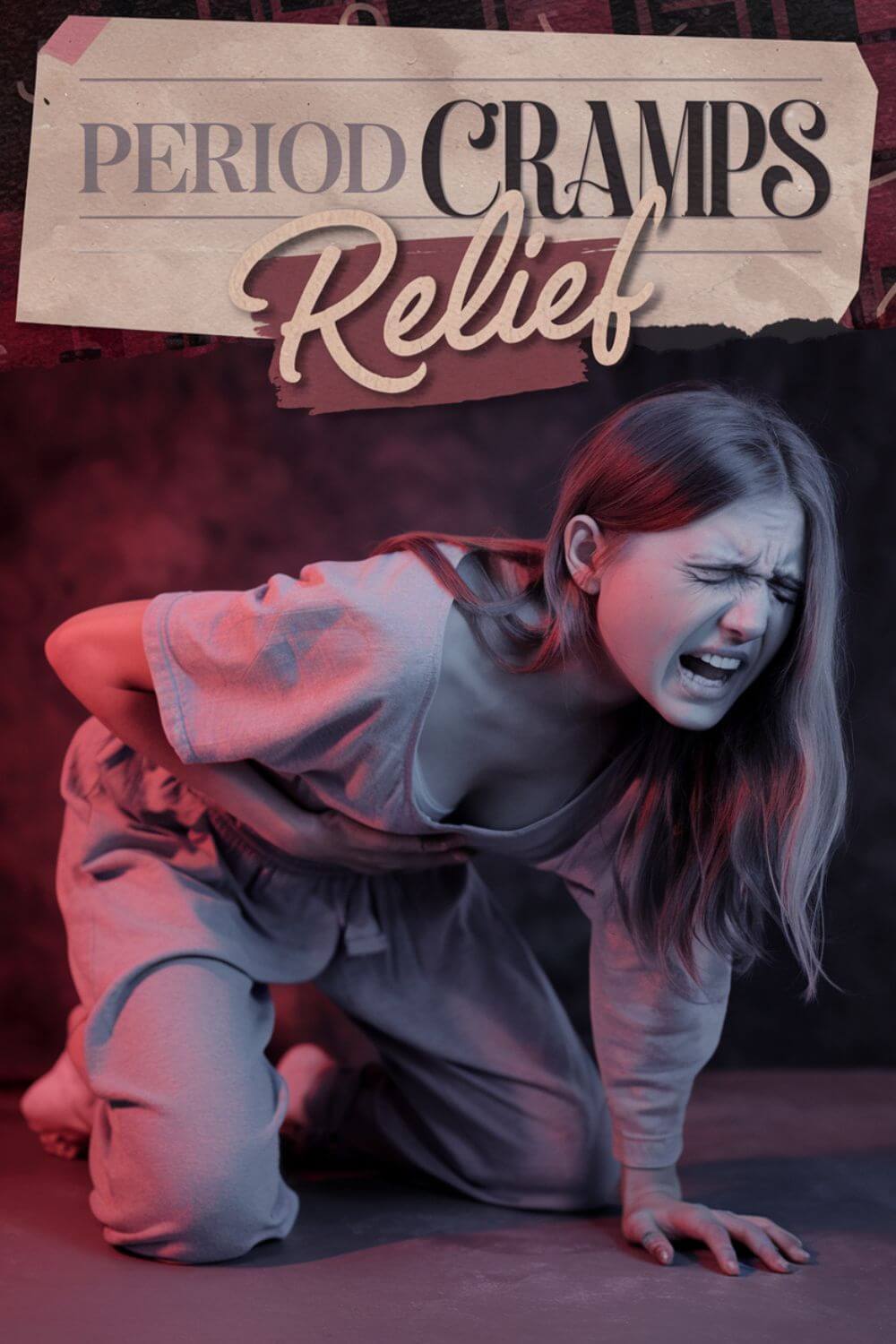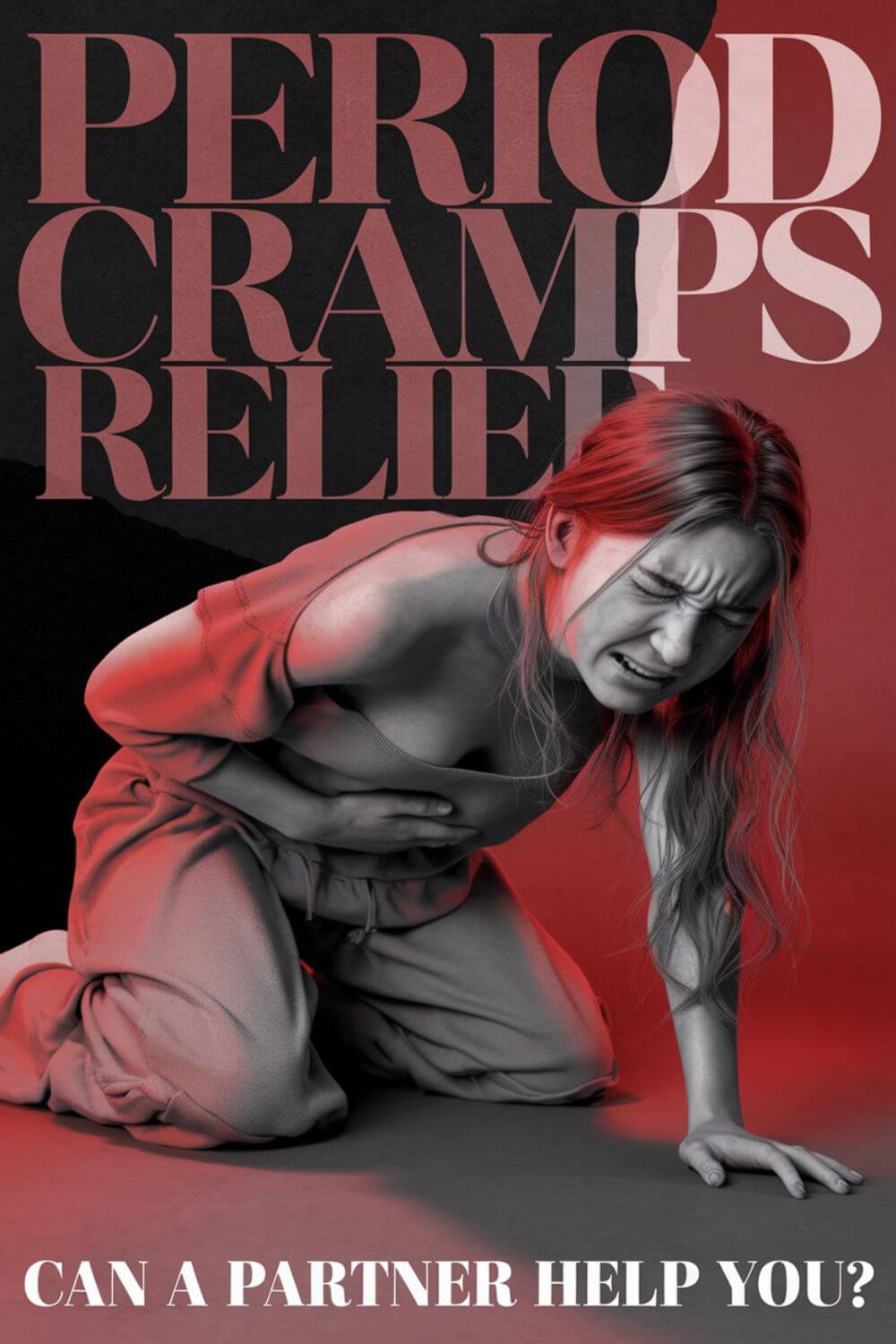Can a Partner Help You with Period Cramps Relief?
Period cramps, or dysmenorrhea, are painful sensations felt in the lower abdomen, often accompanied by symptoms such as nausea, fatigue, and headaches. These cramps occur due to the contraction of the uterus during menstruation. While various remedies exist, your support can play a significant role in alleviating her discomfort. So, you can help with period cramps relief.
Reflecting on my journey with my wife, who battles both endometriosis and fibromyalgia, I’ve witnessed firsthand the profound impact of unwavering support. Simple gestures, like preparing a warm compress or offering a gentle massage, have provided her with noticeable relief during her most challenging times.
Our shared experiences have deepened our bond and underscored the importance of empathy in managing chronic pain.
Discover more insights and practical tips in the sections below.
- Endo-Tool: Endometriosis for Men
- Can a Partner Really Provide Period Cramps Relief?
- How Can I Support My Partner Through Period Cramps?
- The Emotional Impact on Relationships
- How Supporting Builds Emotional Resilience?
- Practical Steps to Provide Period Cramps Relief and Support
- Taking Care of Yourself While Supporting Her
- How to Balance the Relationship?
- Final Word on Period Cramps Relief
Endo-Tool: Endometriosis for Men
Living with and supporting someone who suffers from endometriosis and chronic illnesses can feel overwhelming, especially when you have no guide to help you navigate this uncharted territory. I understand this because I lived it.
That’s why I created the Endo-Tool, a resource designed specifically for men like us who need answers, support, and tools to cope. To give you a head start, I offer a free chapter of my book when you subscribe to my email list.
But that’s just the beginning—through my emails, I provide deeper, more personal insights, practical advice, and additional value that isn’t available in the articles alone. Plus, subscribers get access to discounts, free printables, and other exclusive offers.
The first chapter alone covers essential medical knowledge about endometriosis, including:
- What is endometriosis?
- What are the symptoms?
- What causes endometriosis?
- What does endometriosis look like?
- What are the stages?
- What are the types?
- What is adenomyosis and how is it related to endometriosis?
- Why do some women develop severe endo while others don’t?
- Does endometriosis cause infertility?
- How is endometriosis diagnosed?
- Do types and stages affect treatment?
- Recurrence of endometriosis after excision surgery.
I designed this guide to empower men with knowledge so they can be better partners and caregivers. Knowing more about these complex conditions will give you confidence and direction as you support your loved one.
Stay with me—there’s so much more we need to unpack. The next section dives deeper into what it means to help your partner find period cramps relief.
FREE Chapter of “Endo-Tool”
Endometriosis e-Book for Men

Can a Partner Really Provide Period Cramps Relief?
When my wife is in pain from her endometriosis, I often feel helpless. I think that’s a common experience for many men whose partners suffer from chronic conditions. However, over time, I learned that my support could make a difference, even if I can’t take away her pain entirely. Period cramps relief isn’t just about painkillers or heating pads—it’s about emotional and physical support that makes her feel safe and understood.
One of the most valuable lessons I’ve learned is to simply listen. There were days when my wife’s pain made her feel isolated and frustrated, and she didn’t always want advice. She wanted to feel seen. Small actions like this became a lifeline. Whether it was holding her hand through a flare-up, running a hot bath, or just sitting beside her during those dark moments, I could show her that she wasn’t fighting this alone.
You might not realize it, but your presence and willingness to help in these vulnerable moments mean more than you think. By supporting your partner, you are helping her regain a sense of control and trust. This shared understanding not only helps her heal emotionally but strengthens your relationship. Let’s explore how you can make that support more impactful.
In the next sections, I’ll share practical strategies and personal experiences to guide you through the process.
How Can I Support My Partner Through Period Cramps?
Supporting your partner during period cramps might seem daunting at first, especially if you don’t fully understand what she’s going through. But simple, thoughtful actions can bring her relief and emotional comfort. Here’s what worked for us and might work for you.

Offer Physical Comfort
Sometimes all she needs is physical comfort. Heating pads, hot water bottles, or warm blankets can work wonders during a painful flare-up. I used to prepare these for my wife when I saw her in pain—it’s a small gesture, but one that she greatly appreciated. Massaging her lower back or abdomen (if she’s comfortable with it) can also provide relief by improving blood flow and easing muscle tension.
Be Patient with Her Mood Changes
Pain has a way of draining emotional energy. There were days when my wife’s cramps made her irritable or withdrawn. Instead of taking it personally, I learned to give her space or gently check in with her. Understand that hormonal fluctuations can cause mood swings, and your patience and empathy go a long way in easing her mental load.
Encourage Rest and Self-Care
Periods often leave women exhausted, especially if they are managing chronic illnesses like endometriosis. I made it a point to help my wife prioritize rest and self-care. Encouraging her to take a nap or simply relax without feeling guilty about it can do wonders for her recovery. Taking on chores or tasks she might normally handle can also help reduce her stress.
Learn About Her Condition
When my wife was first diagnosed with endometriosis, I was clueless about what she was going through. Educating myself made a world of difference. When your partner knows you’ve taken the time to understand her condition, she feels validated and supported. Knowledge also gives you the tools to offer practical help when she needs it most.
Respect Her Boundaries
Not all women want the same kind of support. Some may want quiet solitude during cramps, while others may appreciate constant care. Talk to your partner about her needs and preferences. This open communication can prevent misunderstandings and help you be there in the way that truly benefits her.
Supporting your partner isn’t about grand gestures—it’s about being consistently present, understanding, and compassionate. Let’s dive deeper into why these small actions have such a profound impact on your relationship and her well-being.

The Emotional Impact on Relationships
Supporting your partner during painful moments, like period cramps, isn’t just about physical actions. It also builds emotional resilience and trust within your relationship. I learned this firsthand through the many challenges I’ve faced with my wife’s chronic conditions. Periods of intense pain often left her emotionally vulnerable, and being there for her made us both stronger.
For many men, it’s easy to feel powerless when you see someone you love in pain. I struggled with that helplessness for a long time. But when I shifted my focus from trying to “fix” her pain to simply supporting her emotionally, everything changed. I stopped trying to control what was beyond my power and started focusing on the things I could do—like being patient, offering comfort, and giving her a safe space to express her feelings.
The emotional connection deepened as she saw that I understood her pain without minimizing it. When a partner feels truly understood and cared for, it helps reduce the emotional toll that chronic pain or recurring period cramps can take. This emotional healing often becomes as vital as physical relief. I’ve seen how this trust can ease anxiety, depression, and feelings of isolation that often accompany chronic illnesses like endometriosis.
I want men to know that their presence, patience, and empathy have a ripple effect. You’re not just helping your partner cope with pain—you’re building a more resilient, supportive relationship where both of you can find strength. In the next section, we’ll explore more ways to provide both physical and emotional relief to your partner.
How Supporting Builds Emotional Resilience?
One of the biggest lessons I’ve learned over the years is that consistent emotional support during my wife’s most painful moments strengthened both of us. Chronic pain and recurring period cramps can wear down even the most resilient people, and without emotional support, it’s easy to feel isolated and overwhelmed. But being present during those hard times created a safe emotional foundation for our relationship.
I can’t count the number of nights I sat beside my wife while she was curled up in pain. During those moments, all I could do was hold her hand and reassure her that she wasn’t alone. Those simple words—”I’m here with you”—became a powerful tool for both of us. Over time, she started to trust that she didn’t have to carry the weight of her pain in silence.
It’s important to recognize that pain can impact mental health in ways that aren’t immediately visible. My wife’s struggles with anxiety, depression, and OCD were often exacerbated by the relentless pain of her conditions. By learning to emotionally support her without judgment or impatience, I saw her slowly regain a sense of hope and trust—not just in me, but in herself.
This emotional resilience doesn’t happen overnight. It’s built through patience, empathy, and small acts of kindness repeated consistently. Your partner’s pain may not go away, but your unwavering support can give her the strength to keep going. In the next section, I’ll share practical steps that can help you build emotional trust through consistent support strategies.

Practical Steps to Provide Period Cramps Relief and Support
Supporting your partner during period cramps may feel overwhelming at times, especially if you’re unsure how to help. But through my own experience, I’ve learned that small, thoughtful actions can provide both physical relief and emotional comfort. These steps don’t require grand gestures—just patience, empathy, and a willingness to be present when she needs you most.
Here’s how you can offer meaningful support…
Create a Comfort Routine
Having a comfort routine ready can make a huge difference when your partner is in pain. For my wife, it involved preparing a hot water bottle, setting up her favorite blanket, and sometimes making herbal tea. This routine became a signal that she could relax and focus on managing her pain, knowing that I had her immediate needs covered.
This might seem like a small gesture, but it’s incredibly grounding for someone dealing with chronic pain. The predictability of a comfort routine can provide emotional stability in moments when everything else feels overwhelming.
Communicate Without Judgment
Pain can make anyone irritable or short-tempered, and I learned early on not to take my wife’s reactions personally during a flare-up. Instead of reacting defensively, I tried to listen without judgment and ask simple questions like, “What do you need right now?” or “How can I help you?”
This type of communication helped her feel seen and supported rather than misunderstood. It also deepened our emotional bond, allowing us to be more open with each other in both painful and peaceful moments.
Help Manage Stress and Anxiety
Chronic pain often comes with heightened anxiety and stress, especially for women who feel like they can’t rest due to household or work responsibilities. I took on more of the daily tasks around the house to relieve that pressure on my wife. Even small gestures, like handling meal prep or cleaning, gave her permission to rest without guilt.
Reducing her stress also reduced the severity of her symptoms over time. She began to feel less anxious about managing her pain because she knew she had my full support.
Educate Yourself on Her Condition
One of the most empowering things you can do is learn about what your partner is experiencing. I spent hours researching endometriosis and fibromyalgia so I could understand her symptoms better. This knowledge allowed me to offer more targeted support—whether it was suggesting gentle stretches for pain relief or recognizing when she needed medical attention.
Knowing the basics of menstrual health, pain triggers, and effective remedies will not only help your partner but also strengthen your relationship. She’ll see that you’re making an effort to truly understand her condition.
Recognize When to Give Space
Support doesn’t always mean constant presence. Sometimes, my wife needed solitude to process her pain. I learned to respect those moments and give her the space to recharge. However, I always made sure she knew I was nearby if she needed me. This balance of support and independence helped her feel more in control of her healing process.
These practical steps can transform how you and your partner navigate painful moments together. Let’s continue exploring more strategies in the next section, including ways to maintain your own emotional well-being as a caregiver.

Taking Care of Yourself While Supporting Her
As a man supporting a partner with chronic pain, I learned the hard way that you can’t pour from an empty cup. Early on, I threw myself completely into caring for my wife, often neglecting my own emotional and physical well-being. Over time, I realized that if I didn’t take care of myself, I wouldn’t be able to support her the way she needed.
It’s common for caregiving partners to experience burnout, especially when the pain and stress seem relentless. I’ve felt that exhaustion and frustration myself. What helped me cope was developing a routine to maintain my own mental and physical health. This included regular exercise to manage stress, setting aside time to do things I enjoyed, and even talking to trusted friends about what I was going through.
Self-care doesn’t mean you’re abandoning your partner. In fact, by maintaining your own well-being, you become more patient, empathetic, and emotionally available. I found that when I was in a better headspace, I could approach my wife’s pain with more understanding and less frustration.
Boundaries are also crucial. You don’t have to say yes to everything, and it’s okay to ask for help. Whether it’s involving other family members or seeking support from a counselor, finding ways to share the emotional burden can prevent both you and your partner from feeling isolated.
Remember, being a strong partner starts with being kind to yourself. If you neglect your own needs, you’ll eventually struggle to provide the care your partner deserves. The next section will dive into ways to maintain balance in your relationship while facing the ongoing challenges of chronic pain together.
How to Balance the Relationship?
Maintaining balance in your relationship while supporting your partner through chronic pain can be challenging. I know this from personal experience—when my wife’s endometriosis and fibromyalgia symptoms flared up, everything in our lives revolved around managing her pain. It was easy to fall into the trap of neglecting our relationship itself, focusing only on caregiving.
What helped us regain balance was prioritizing open communication. We started having regular check-ins where we could talk about how both of us were feeling—not just about the pain but also about our relationship and emotional needs. I learned to express my frustrations and concerns in a respectful way, while also encouraging my wife to share her fears and struggles without shame.
It’s also important to make time for moments of joy. Chronic pain doesn’t mean your relationship should lose its fun and intimacy. We made an effort to create small pockets of happiness, whether through movie nights, short walks, or simply sitting together with no distractions. These moments reminded us that there was more to our relationship than just the illness.
Another crucial part of balance is acknowledging your partner’s independence. While it’s tempting to try to solve every problem for them, I learned that my wife needed to maintain her autonomy to feel empowered. By supporting her rather than taking over, I showed her that I respected her strength and resilience.
At the same time, I had to learn to let go of the guilt I felt when I couldn’t “fix” everything. Supporting someone with chronic pain doesn’t mean you have to have all the answers. Simply being present, loving, and patient is often the most impactful thing you can do. In the final section, I’ll summarize everything we’ve discussed and provide some motivational words for partners navigating these challenges.

Final Word on Period Cramps Relief
Supporting your partner through period cramps, especially when complicated by chronic conditions like endometriosis or fibromyalgia, is a journey that requires empathy, patience, and resilience. Over the years, I’ve learned that while you can’t erase her pain, your presence and support can provide a form of relief that’s just as important as any medical remedy. By being there for her—physically and emotionally—you can strengthen your relationship and create a safe, loving environment where healing and hope are possible.
Remember that small, consistent actions have a lasting impact. Whether it’s making her a hot cup of tea, gently massaging her back, or simply sitting beside her when she’s at her worst, these moments of care show her that she’s not alone. When your partner feels understood and supported, she gains the strength to face her pain with a renewed sense of hope.
But don’t forget that your well-being matters too. Taking time for self-care, setting boundaries, and asking for help when you need it are crucial for maintaining your own mental and emotional health. Supporting a loved one through chronic pain is a marathon, not a sprint—you have to pace yourself to be there for the long haul.
By sharing your strength, you’re not only helping your partner manage her pain; you’re also contributing to her emotional healing. Together, you can face the challenges of chronic illness with courage and compassion, growing stronger and closer along the way.
Thank you for reading this and for being the kind of partner who seeks to learn and grow in your role. Your effort to understand and support your loved one does more than ease her pain—it shows her that she’s valued, cherished, and never alone in her journey. You’re making a difference that matters more than words can express. Keep going—you’re stronger than you realize.
You have the strength to make her pain more bearable and your relationship more resilient with love, patience, and understanding.


About Me
Hi, I’m Lucjan! The reason why I decided to create this blog was my beautiful wife, who experienced a lot of pain in life, but also the lack of information about endometriosis and fibromyalgia for men…
